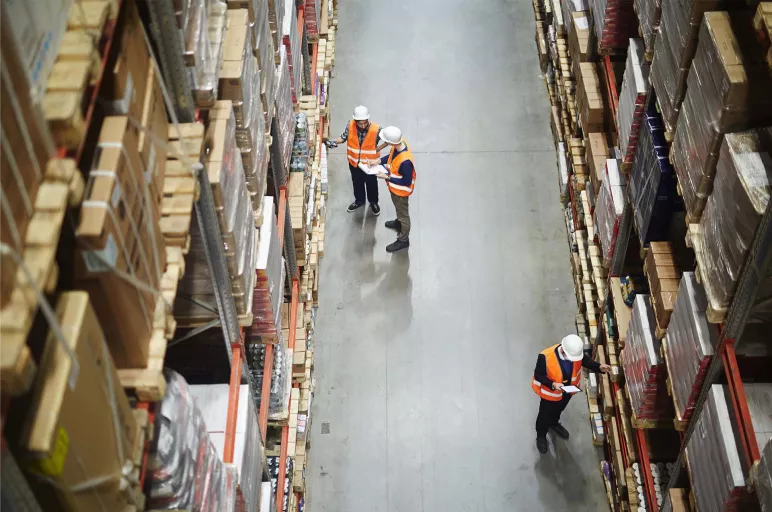
Logistics and Supply Chain Management: Meaning Differences And Similarities
- Logistics management comes under the ambit of the larger supply chain management function
- Logistics deals with the inbound and outbound movement of goods within time, the storage of goods, inventory control and tracking
- Supply chain management is about planning, implementing and controlling all operations from sourcing to delivering goods to end-users
June 14, 2022 | Supply Chain Strategy
Living through the pandemic taught a valuable lesson to businesses. They realized that long global supply chains were at extreme risk of getting disrupted, and hence shorter supply chains were preferable. Thus, in this changing world, enterprises are reverting to local supply chains supplementing their shipments from overseas by a larger volume.
This shift to regional supply chains from global, that is, moving and storing goods from the raw material supplier and the finished goods to the end customer, is becoming cheaper. In other words, managing logistics is getting cheaper.
So, to distinguish between logistics and supply chain management, understanding the meaning of each term is vital for enterprises.
What is Logistics Management?
Logistics management involves optimizing those processes in supply chain management that involve logistics procurement services, moving and storing goods and information, including traceability, be it raw materials supplied for production or the finished goods distributed to end customers, safely and cost-effectively.
Thus, logistics management manages the following:
• Inbound Logistics:
The transportation of raw materials from the supplier to the factory and its storage, including inventory control.
• Outbound Logistics:
The storage of finished goods and their transportation or distribution to the end customer.
In addition to the above activities, logistics management is also responsible for warehouse management – put-away, picking, packing, and fulfilment.
What is Supply Chain Management?
Famous logistician Keith Oliver, defined supply chain management (SCM) as "the process of planning, implementing and controlling the operations of a supply chain to satisfy customer requirements as efficiently as possible."
Supply chain management includes all processes involved in receiving, processing and fulfilling a customer's requirements, new product development, demand forecasting, procurement, marketing, operations, logistics, production, distribution, finance, customer service, process optimization and returns. Its primary objective is to gain a competitive advantage and improve its brand image.
What are the Differences Between Logistics Management and Supply Chain Management?
Here are a few differences.
|
Parameters |
Logistics Management |
Supply Chain Management |
|---|---|---|
|
Primary Scope |
Inbound and outbound movement of goods within time, storage of goods, inventory control and tracking. Logistics comes under the ambit of the larger supply chain management function |
Planning, implementing and controlling all operations from sourcing raw material to delivering finished goods to end-users and coordinating between them |
|
Primary Objective |
Customer satisfaction |
Gain market share and improve image |
|
Focus |
Maintain & deliver the correct goods safely, efficiently, and cost-effectively to the right person. It is a tactical activity. |
Controlling all supply chain activities and optimizing all processes for higher efficiency resulting in added value and reduced costs. This is a strategic function. |
|
Processes |
|
|
|
Digital Platforms |
Standalone software. No integration between the various systems.
|
Customized software solutions built using the latest technologies – IoT, predictive analytics, AI, and control tower offering end-to-end supply chain planning, visibility, logistics management, and collaboration with partners and stakeholders under a single platform. Such a unified supply chain software solution seamlessly integrates with all third-party and ERP legacy systems. |
|
Advantages |
Increased cost savings, easier implementation and management of logistics processes. |
Reduces wastage of resources across the supply chain and adheres to lean best practices, increases efficiency across the supply chain, provides increased visibility, thus enabling resilience, manages risks proactively, and boosts collaboration with disparate partners, suppliers and systems. |
What are the Similarities Between Logistics and Supply Chain Management?
Since logistics management comes under the ambit of the larger supply chain management function, it is natural to expect an overlap of activities between the two. Although the two terms may not be used interchangeably, they supplement each other to provide a great customer experience.
Here are a few similarities:
- Services for Logistics management is responsible for moving goods and warehousing. Supply chain management is also responsible for moving goods and warehousing in addition to other activities.
- The objectives of both are to enable an organization to succeed and gain market share, although each goes about achieving this in its own way.
- Increasing customer loyalty and retention through their satisfaction is also a goal for both the management functions.
- They both complement each other.
To sum up
For a supply chain to be effective and resilient, internal partner teams, such as planning, procurement, logistics, manufacturing, marketing and finance, must collaborate with each other and external partners. It means exchanging vital information by sharing real-time visibility data with all partners and stakeholders to resolve problems quickly.



